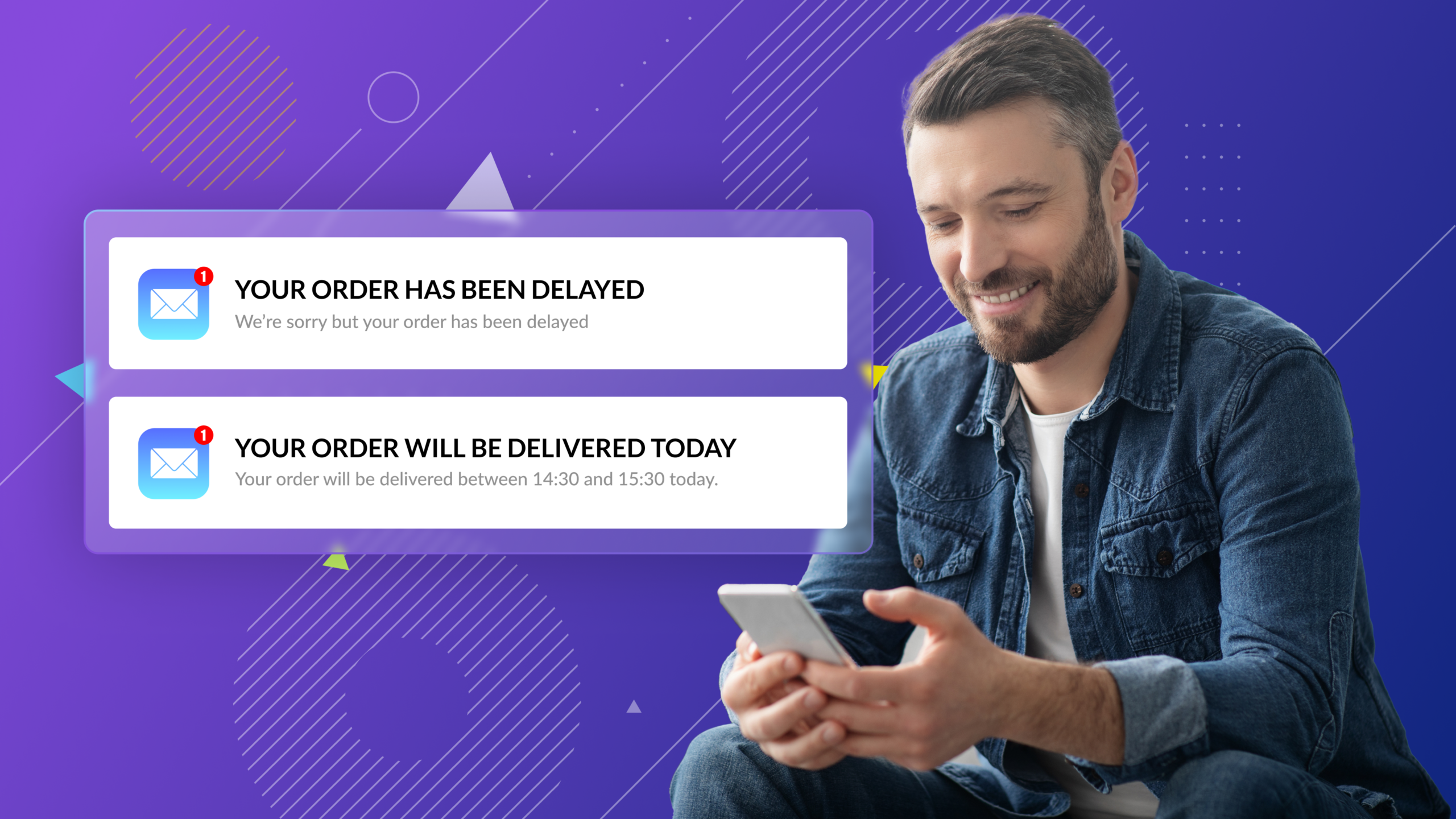As a growing ecommerce retailer, it is natural to uncover some bumps in the road on your journey. More specifically, your brand might be encountering some roadblocks as it relates to improving your post-purchase experience. This is an area that, when done properly, can drive more conversions, higher customer retention rates, and lower costs.
Let’s dive into some common challenges we have seen retailers run into when growing quickly and how parcelLab customers have overcome this.
1. Legacy Technology Stunts Growth
The impression your brand leaves on a customer during the post-purchase process can make or break whether they choose to buy from you again. It should come as no surprise that more and more consumers are expecting personalized experiences, and if you are using legacy technology, it may be a struggle to keep up with this demand.
Lack of On-Site Traffic from Existing Customers
While certain order-tracking and post-purchase communication experiences may have worked in the past, it may be time to rethink this, especially if your brand is diverting customers to a website that is different than your own. To continue on a growth trajectory, it is important to keep customers coming back to your website. By hosting your tracking pages, you gain the ability to provide customers with a consistent, personalized experience and create more opportunities for reconversion.
Explore parcelLab's Engage product suite
Learn moreStruggles with Language Complexity and Support
If you are looking to expand globally or you already have, the post-purchase journeys you create should reflect the different languages of those you are selling to. Some post-purchase software cannot handle or support the complexity of different markets. The provider you choose should be able to grow with you and be flexible enough to help your brand continue expanding into different areas.
It doesn’t just end there either. If you are a North American brand trying to extend to Europe, your provider must be able to adhere to GDPR and other data privacy standards. If they don’t, it becomes hard to provide an optimal experience which can deter consumers from purchasing items from your shop and you could experience big fines.
Customer Example
In fact, one of parcelLab’s customers, BOSE, experienced these pains while they were seeing rapid DTC channel growth. They had goals to increase CSAT scores and wanted to implement a test-and-learn mentality. They discovered that they were being held back by legacy technology that couldn’t meet their needs and struggled to deliver the fast pace of change required by ecommerce teams.
parcelLab helped BOSE enable an end-to-end communication flow and provided BOSE with the ability to host their tracking pages on their own website. Since over 800 brands from all over the globe use parcelLab and our platform adheres to the highest levels of data security and compliance, it was simple for BOSE to set up journeys that meet the expectations of different market segments.
By switching to a more intuitive and future-proof post-purchase experience, BOSE saw a 20% increase in their CSAT scores as well as a 6% improvement in unique clicks on their webshop.
2. High Call Center Inquiries Drive Unwanted Costs
Unfortunately, mistakes happen and sometimes can be unavoidable. The way your brand handles delays, failed delivery attempts, pickup readiness, split shipments, etc. matters. If you leave your customers in the dark, your WISMO inquiries will be high – costing you money that you could be spending elsewhere.
We have spoken with many retailers who have limited post-purchase communication touchpoints whether it is because they are relying on carrier communication or their current provider prevents them from having different types. In some cases, providers cannot work on delay messages fast enough to meet the needs of retailers.
It is important to take a look at your top reasons for contact to determine the root causes of customer service inquiries, so you can choose how to be proactive instead of reactive. Most retailers have what is called a “happy path.” This is where everything in the post-purchase journey goes according to plan from order received to delivery. It is not as common, however, to have a “sad path” which can include failed attempts, delays, pick-ups, and neighbor deliveries. Sad paths can leave an impact on your customer and if handled poorly, can prevent them from purchasing items from your brand in the future.
During the post-purchase experience, customers want to be informed every step of the way. If you are limiting your contact, especially during a sad path, you are missing out on opportunities to retain customers and even cross-sell/upsell to them in the process.
The post-purchase experience software that you use should empower your brand to create multiple touchpoints and journeys to make powerful impressions on your customers. It should be flexible enough to allow for someone on your team to quickly input banners into customer communications if unexpected occurrences happen. For example, parcelLab’s Campaign Manager enables retailers to do just that, so brands can decrease WISMO inquiries and provide a personalized experience.
Customer Example
Yeti switched to parcelLab after realizing they had no brand control of their customer’s post-purchase experience. Additionally, they saw overall confusion from their customers about communications and the order tracking experience, specifically when there were split shipments involved.
Since implementing parcelLab, they introduced a multi-touchpoint tracking communication experience, including split-shipment tracking summaries and geo-specific out for delivery, delayed, and delivered emails. Yeti now provides a personalized experience in every aspect of their post-purchase experience including returns and in their custom business order experiences. They are currently using parcelLab in North America and EMEA where they have increased their open rates to 80% on average.
Learn about how to overcome the challenges of scaling logistics in a fast-growing business.
Listen now3. Complex Returns Processes
When you are a fast-growing retailer, creating a personalized returns journey can be challenging. Returns are complex and often expose a retailer’s manual, cost-prohibited processes. This can create a confusing customer experience and make it difficult to retain revenue.
In fact, parcelLab research found that 62% of customers are unlikely to reengage with a brand after a poor returns experience. So, take this as a sign to dive deeper into your returns experience and see what is working and what isn’t.
We understand that there may be more than one thing standing in your way when trying to improve your returns process. Our Transform Your Returns Experience eBook goes into detail about common return friction points and how retailers have addressed them. Additionally, while re-imagining your returns experience can feel like a big lift, there are platforms, like parcelLab, that can help your team tackle challenges faster and empower them to exceed their goals.
Customer Example
This men’s fashion brand works with several outsourced logistics and other partners to deliver a white-labeled customer experience. As they grew, they faced a scale-up problem. Their existing post-purchase setup left major gaps in automating complex returns processing options such as returns under $500, exchange upsell, keeping physical returns, gift returns, discount exchanges, and more. Additionally, they weren’t able to develop a specialized self-serve returns portal communication flow that incorporated logistics and product quality checks prior to acceptance.
With parcelLab’s returns product suite, Retain, this brand completely transformed its returns experience and implemented a robust returns portal with:
- An embedded, digital returns experience
- The ability to exchange returns with an auto-release on drop-off
- The ability to send repeat returners to a service agent for quality pre-check
- Default refund setting to store credit with a $5 bonus or original payment
- Multi-return options
- Specialized returns flow including a product quality guarantee portal and a dedicated portal for fulfillment issues
- And more!
Looking to Take Your Growing Brand to the Next Level?
parcelLab is here to help transform your post-purchase experience from end to end. Contact us today to learn more about how we can get you up and running quickly so you can see results fast.
Frequently Asked Questions
Retailers can measure the impact of improved post-purchase experiences through customer feedback surveys, repeat purchase rates, and analyzing changes in customer retention metrics. Tools like Net Promoter Score (NPS) and Customer Satisfaction Score (CSAT) are also valuable for gauging customer satisfaction and loyalty.
Beyond post-purchase communication tools, retailers can employ personalized marketing strategies, loyalty programs, and proactive customer service initiatives to manage call center inquiries. Offering comprehensive FAQs and self-service options on their website can also significantly reduce the volume of inquiries.
Retailers often overcome legacy technology challenges by adopting cloud-based platforms that offer scalability, integration capabilities, and advanced analytics. Partnering with technology providers that specialize in retail solutions can also offer tailored strategies for digital transformation.
parcelLab’s platform integrates with existing eCommerce and customer service systems through APIs and software connectors, enabling seamless data exchange and automating the returns process. This integration allows for personalized customer communications and efficient handling of post-purchase experiences.
Written by





